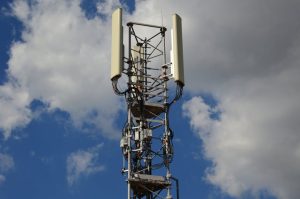
Starlink is a satellite constellation developed by SpaceX, a private aerospace manufacturer and space transport services company founded by Elon Musk. The project aims to provide high-speed, low-latency internet connectivity worldwide, especially in areas where traditional fiber-optic cables are not available or are too expensive to install. As of 2022, Starlink has launched over 3,000 satellites into orbit and has gained popularity among users in remote and underserved areas.
The Focus Keyword Starlink has been making waves in the tech industry with its innovative approach to satellite internet. By using a constellation of low-Earth orbit satellites, Starlink can provide faster and more reliable internet connectivity compared to traditional satellite internet services. The satellites are equipped with advanced technology, including Hall effect thrusters and Starlink’s own software, to ensure efficient and secure data transmission.
How Starlink Works
Starlink uses a network of satellites in low-Earth orbit, approximately 550 kilometers above the Earth’s surface. These satellites are equipped with transceivers that transmit and receive data to and from user terminals on the ground. The user terminals, which resemble small dishes, communicate with the satellites to access the internet. The satellites then relay the data to a network of ground stations, which connect to the global internet backbone.
The low-Earth orbit of the satellites enables Starlink to provide lower latency compared to traditional satellite internet services, which use satellites in geostationary orbit. This results in faster data transmission and a more responsive user experience. Additionally, the constellation’s design allows for redundancy and backup, ensuring that users remain connected even if one or more satellites experience technical issues.
Benefits of Starlink
Starlink offers several benefits over traditional internet services, particularly in areas where access to reliable and fast internet is limited. Some of the key advantages of Starlink include:
Global coverage: Starlink’s satellite constellation provides coverage to almost any location on Earth, making it an ideal solution for remote and underserved communities. High-speed internet: Starlink’s advanced technology enables fast data transmission, with speeds of up to 1 Gbps (gigabit per second) and latency as low as 20 ms (milliseconds). Low cost: Starlink’s pricing is competitive with traditional internet services, especially considering the cost of installing and maintaining fiber-optic cables in remote areas.
Portability: Starlink’s user terminals are compact and portable, making it easy to set up and use the service in different locations. Security: Starlink’s satellites and user terminals use advanced encryption and security protocols to protect user data and prevent unauthorized access.
Challenges and Future Developments
While Starlink has made significant progress in providing high-speed internet connectivity to remote and underserved areas, there are still challenges to be addressed. Some of the key issues include:
Interference: Starlink’s satellites operate on the same frequency bands as other satellite systems, which can cause interference and affect service quality. Regulation: Starlink must comply with regulatory requirements in different countries, which can be complex and time-consuming. Competition: Starlink faces competition from other satellite internet providers, such as Amazon’s Kuiper Systems and OneWeb, which can impact market share and pricing.
Despite these challenges, Starlink continues to evolve and improve its services. Future developments include the launch of additional satellites, upgrades to the user terminals, and the integration of new technologies, such as advanced beamforming and phased arrays.
Conclusion
Starlink is a revolutionary satellite internet service that has the potential to transform the way we access and use the internet. With its advanced technology, global coverage, and competitive pricing, Starlink is an attractive solution for individuals and communities in remote and underserved areas. As the service continues to evolve and improve, it is likely to have a significant impact on the future of internet connectivity and the digital divide.


